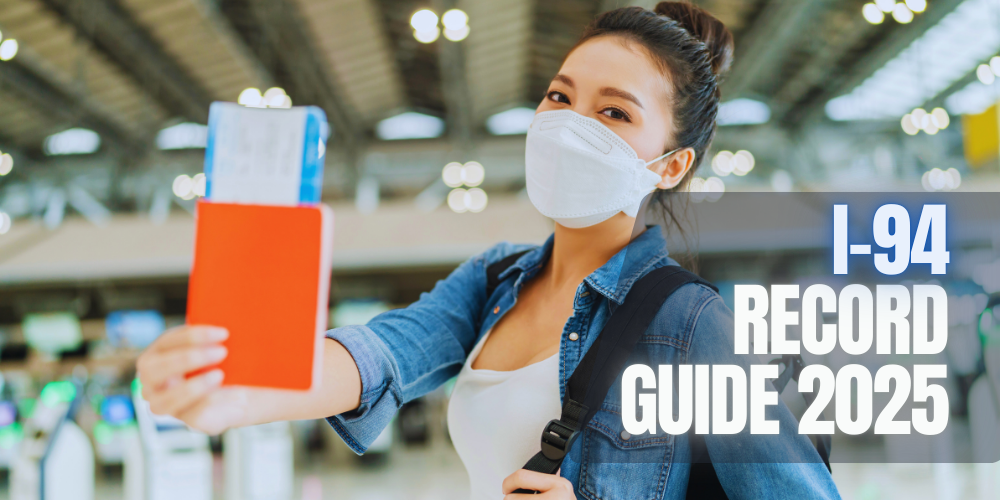--------- Staying 90 Days in the U.S.? Avoid Common Visa Mistakes with This Guide
Nov 1, 2024

For travelers from around the world, the U.S. holds countless sights and experiences worth exploring. Fortunately, if you’re a citizen of one of the 40 countries participating in the U.S. Visa Waiver Program (VWP), you can enjoy up to 90 days in the U.S. without a visa—making vacation planning simpler and faster. However, the 90-day rule has its limitations and requires careful attention to avoid unexpected consequences. This guide outlines everything you need to know to stay compliant, enjoy a worry-free visit, and avoid any complications related to overstaying.
What Is the 90-Day Visa Waiver Program (VWP)?
The Visa Waiver Program (VWP) is a U.S. initiative that allows citizens of certain countries to enter the U.S. for tourism, business, or family visits without obtaining a traditional visa. Under this program, travelers can stay up to 90 days in the U.S. without a visa by using the Electronic System for Travel Authorization (ESTA), which screens eligible visitors before arrival. It’s essential to remember that this program is strictly limited to short-term visits.
ESTA is an online authorization available to citizens from eligible countries. This allows you to enter the U.S. under the VWP for two years, or until your passport expires. However, ESTA approval alone does not guarantee entry; this remains at the discretion of U.S. Customs and Border Protection upon arrival.
Who Can Use the 90-Day Visa Waiver Program?
The VWP applies to citizens of 40 designated countries, most of which are in Europe and include allies such as Japan, South Korea, and Australia. Here’s a quick look at eligible VWP countries:
If your country does not participate in the VWP, or if you plan to stay beyond the 90-day limit, you’ll need a traditional visa, such as the B-2 Tourist Visa, which generally permits up to six months for vacation or family visits.
How to Calculate Your 90-Day Stay
Knowing how to calculate your stay is crucial for avoiding an overstay:
- Start Counting on Entry: Your arrival day counts as Day 1.
- Include All Calendar Days: Each calendar day counts toward the 90-day limit.
- Leave by Midnight on Day 90: Plan to exit the U.S. on or before the last day of your stay.
To calculate your permitted stay accurately, consider using a countdown app or setting reminders for “90 days from today” based on your arrival date. Here’s an example of how to plan your visit within the rule’s limits:
Remember that this 90-day period applies each time you enter the U.S., but frequent re-entry attempts may raise red flags. Each time, you must demonstrate that your stay is temporary and within the allowable limit.
How Much Does the 90-Day Waiver Cost?
Entering the U.S. under the VWP costs less and is simpler than obtaining a traditional visa. Here are the key costs:
Applying for ESTA is straightforward. The $21 USD fee covers your two-year ESTA authorization (or until your passport expires). ESTA allows short trips within the 90-day limit without a visa, but if you need a longer visit, consider the B-2 visa.
How Soon Can You Re-enter the U.S. After 90 Days?
The 90-day rule doesn’t require a mandatory waiting period before re-entry, but re-entering the U.S. shortly after your last visit may raise questions at customs. Customs officers have the authority to inquire about your travel plans and may deny entry if they believe you’re attempting to “reset” the 90-day count too frequently.
Tips for a Smooth Re-entry:
- Allow Time Outside the U.S.: After your 90-day stay, wait several weeks or even a few months before returning.
- Have Supporting Documents: If questioned, presenting documents that show ties to your home country—like proof of employment or property ownership—can reassure officials of your intent.
- Avoid Prolonged Visits: Frequent or extended stays may be perceived as attempts to live in the U.S. on a short-term visa, which can lead to entry denial.
Consequences of Overstaying the 90-Day Period
The U.S. treats visa overstays very seriously, and breaching the 90-day limit can lead to severe consequences:
- Immediate Deportation: Overstays, regardless of length, can result in deportation.
- Travel Bans: A record of overstaying could lead to a ban on future entries.
- Future Visa Complications: Overstaying may affect your eligibility for visas or ESTA renewals in the future.
Here’s an overview of the potential consequences of overstaying the VWP:
If you unintentionally risk overstaying, it’s best to leave the U.S. a few days early to avoid complications. Keeping track of “90 days from today” based on your entry date can help prevent last-minute travel issues.
Tips for Staying Compliant During Your 90-Day Stay
Avoiding issues is easy with a bit of planning. Here’s how to make sure your visit remains worry-free:
- Double-Check Entry/Exit Dates: Keep a record of your arrival and departure.
- Set Reminders for Departure: An online countdown or reminder app can help track “90 days from today” to stay on schedule.
- Consider a Different Visa if Needed: For longer visits, a B-2 visa may provide more flexibility.
- Use ESTA Tools for Tracking: ESTA offers tools to recheck entry eligibility if you have recent travel patterns or plan multiple trips.
If your trip length is close to the limit, planning a departure a few days earlier than Day 90 helps ensure you don’t accidentally overstay and face penalties.
When You Need More Than 90 Days: Alternative Options
If you realize you need more than 90 days for your visit, there are options available:
- Apply for a B-2 Tourist Visa: This visa allows up to six months for tourism, family visits, or medical care and may be extended under certain circumstances.
- Visa Extensions: If you’re already in the U.S. on a B-2 visa and need more time, you can file an extension request with the U.S. Citizenship and Immigration Services (USCIS).
- Pre-Departure Planning: If you’re uncertain about re-entry eligibility, checking with the U.S. embassy in your country can clarify requirements and options.
In emergencies, such as family illness or other extenuating circumstances, contacting the U.S. embassy or consulate can help determine if a temporary extension is possible.
Frequently Asked Questions (FAQ)
- Does the 90-day clock reset if I leave and re-enter? No, leaving and re-entering does not reset the 90-day count. Customs officers may question multiple re-entries within short periods.
- Are there emergency exceptions? Emergency extensions are rare and generally approved only for urgent, unexpected situations.
- Can I travel to Canada or Mexico to reset my 90 days? No, travel to neighboring countries does not reset your stay duration. The 90 days remain cumulative.
- Can I work during my 90-day stay? No, work activities are not allowed under the VWP. Work requires a separate visa.
Traveling to the U.S. for up to 90 days without a visa can be convenient, but the rules require close attention. Planning, using tools to track “90 days from today,” and avoiding re-entry complications can make your trip stress-free and compliant. For travelers who may need a longer stay, a B-2 visa or other options can provide flexibility, ensuring that your time in the U.S. is not only enjoyable but free from legal complications.
Staying informed and prepared will allow you to make the most of your 90-day visit to the U.S. and return with wonderful memories and experiences, all within the rules set by the Visa Waiver Program.
Recent Articles

Visa Number for ESTA: Everything You Need to Know Before You Fly
If you’ve ever tried to check in online for a U.S.-bound flight and been met with that dreaded box

I-94 Record Guide 2025: How to Get, Retrieve, and Fix Your Arrival/Departure Record
If U.S. immigration were a novel, the I-94 would be the quiet supporting character who turns out to

H-1B to H-4 Change of Status: The Complete 2025 Guide (Processing Times, Requirements & EAD Eligibility)
Transitioning from H-1B to H-4 status isn’t just a bureaucratic shuffle—it’s a strategic shift

How Long Does a TN Visa Extension Take in 2025?
Time — it’s the one thing every TN professional learns to respect. Whether you’re an engi

The Easiest Countries to Get Citizenship in 2025: Fast Tracks, Smart Moves, and Hidden Shortcuts
In 2025, the idea of belonging to just one nation feels almost quaint. As the world continues to shr

U.S. Citizenship Made Simple: Eligibility, Process, and Requirements Explained
For many, U.S. citizenship is more than just a passport—it’s a gateway to stability, opportunity
Read More

Visa Number for ESTA: Everything You Need to Know Before You Fly

I-94 Record Guide 2025: How to Get, Retrieve, and Fix Your Arrival/Departure Record

H-1B to H-4 Change of Status: The Complete 2025 Guide (Processing Times, Requirements & EAD Eligibility)

How Long Does a TN Visa Extension Take in 2025?

The Easiest Countries to Get Citizenship in 2025: Fast Tracks, Smart Moves, and Hidden Shortcuts

U.S. Citizenship Made Simple: Eligibility, Process, and Requirements Explained

Welcome to the VisaTravel blog. We know that navigating the maze of visa applications and online forms can be as tricky as choosing the perfect travel playlist (which is all we want you worrying about anyway).
Throughout our years of experience, though, we’ve uncovered a mountain of knowledge which, via this blog, we’re sharing with you! Whether you're diving into the world of travel visas, wondering about the ESTA online hustle, or just trying to figure out the DS160 form, think of us as your online concierge, here to make the process easy and most of all, clear.
At this point in our global context, who has time for endless paperwork and confusing legal jargon? No one. That's why we're all about spilling the tea on online visa hacks, easier-to-work-with DS160 forms, and giving you tips on everything from tourist visas to immigration, to that last-minute ESTA online adventure.
So, just plug in a word you’re curious about on the search bar, and boom. We've got the tips, tricks, and insider info to help you (and anyone else you may be traveling with) get to your travel destination with the confidence of a seasoned traveler.
Now go explore!
 U.S. Visa
U.S. Visa
 Canada eTA
Canada eTA
 Schengen Visa
Schengen Visa
 New Zealand eTA
New Zealand eTA
 United Kingdom eTA
United Kingdom eTA
 Australia eVisitor
Australia eVisitor
 Vietnam eVisa
Vietnam eVisa
 Egypt eVisa
Egypt eVisa
 Singapore Arrival Card
Singapore Arrival Card
 Sri Lanka eVisa
Sri Lanka eVisa







